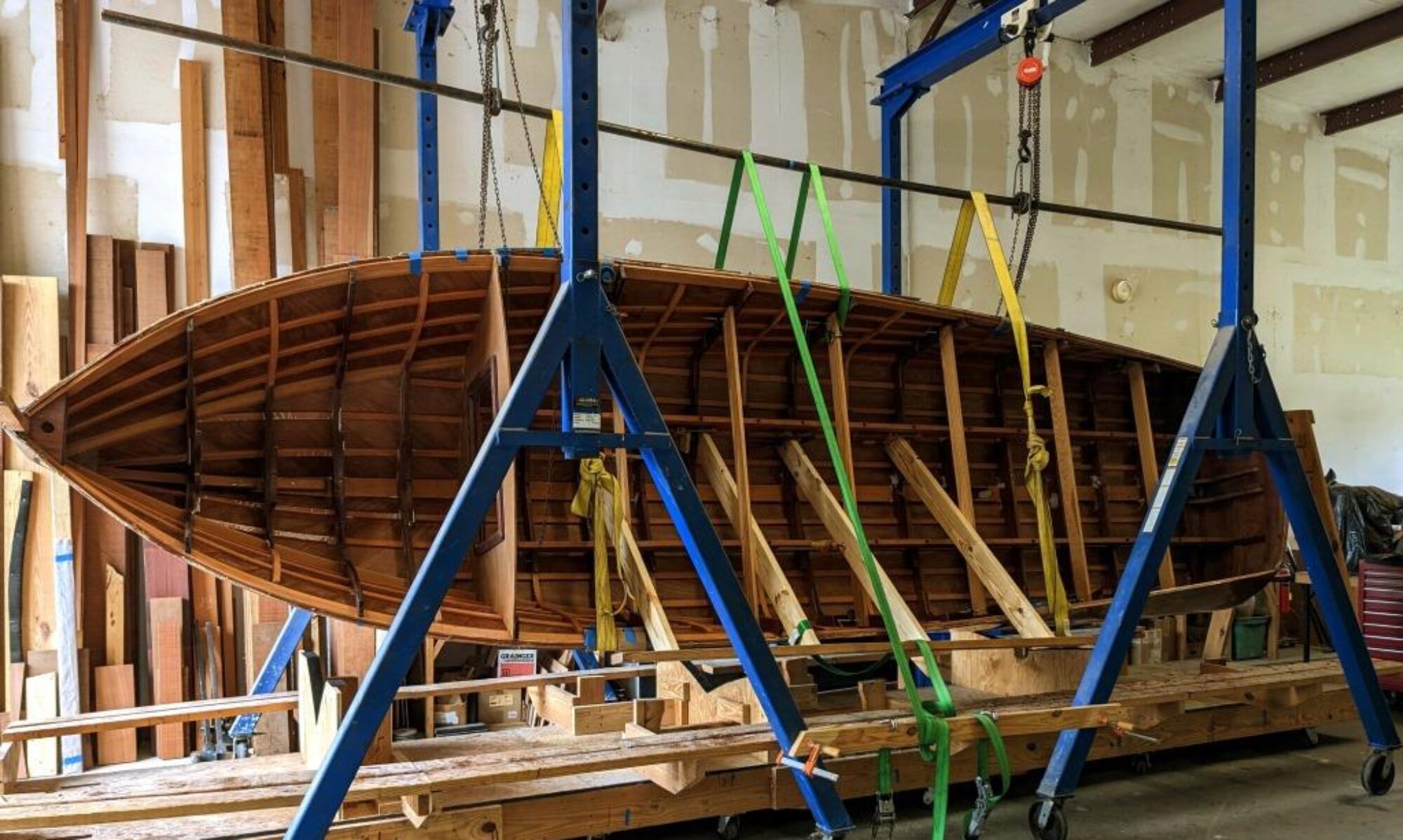
No, the transom framing isn’t growing porcupine quills. Look closer–they’re toothpicks. Bear with me. There’s a method to my madness.
If it seems like I’m procrastinating on planking the bottom, let me explain myself. There’s really a lot to do before you cover up those frames that you need to clamp to. And all those places that are so easy to get to when you can reach through the bottom will take a lot longer to deal with when that ready access is denied by a new bullet-proof bottom. So get those frames and the underside of the deck painted while it’s easy!
Working with the transom is one of those things that’s easier done when you can reach through the bottom of the boat, so that’s what I’m working on now. Of course the bottom plank of the transom was removed long ago so we could replace the lower transom bow. I didn’t want to remover the other two planks until it was time to replace them because they help to hold the shape of the boat. With the new bottom frames coated and now permanently glued in place, the boat is a whole lot stiffer and less likely to be pulled out of shape. So let’s get cracking!

First, why replace the transom planks at all? Well, there’s a hole in the top plank that I can’t explain and can’t think of a good use for. And the fact that the middle plank has been patched. Add to that the prospect of matching stain on one new plank to two old ones, and it becomes easier to just replace all three planks.
So, removal begins with taking all the bungs out to access the screw heads and hoping most of the screws don’t break when I try to take them out. In this case, I was pretty lucky (whew–not too much wailing and gnashing of teeth!).

Did you know that when a wood screw is removed from its hole, it loses 85% of its holding power. The screw threads cut into the wood fibers when you put it in the first time. You simply can’t put it back in an old screw hole and expect it to hold nearly as well as it did the first time. So I fill all the screw holes in the framework pieces that won’t be replaced. I do this with epoxy and toothpicks, cutting them off flush after the epoxy cures. Now I don’t have to worry about lining up or missing old screw holes, and it holds together much better.

Next step is to coat the framework with Smith’s CPES–that’s Clear Penetrating Epoxy Sealant. It’s epoxy that’s been thinned to almost the consistency of water so it will soak in to the wood. Really good stuff! So good, in fact, that you have to wear a respirator with charcoal filters when you’re using it. It’s best to plan this for the end of your day and just leave the shop afterwards. This stuff is really strong-smelling.
Then time to cut out the new planks and steam bend them to the curve of the transom. But we’ll save that for another day.
